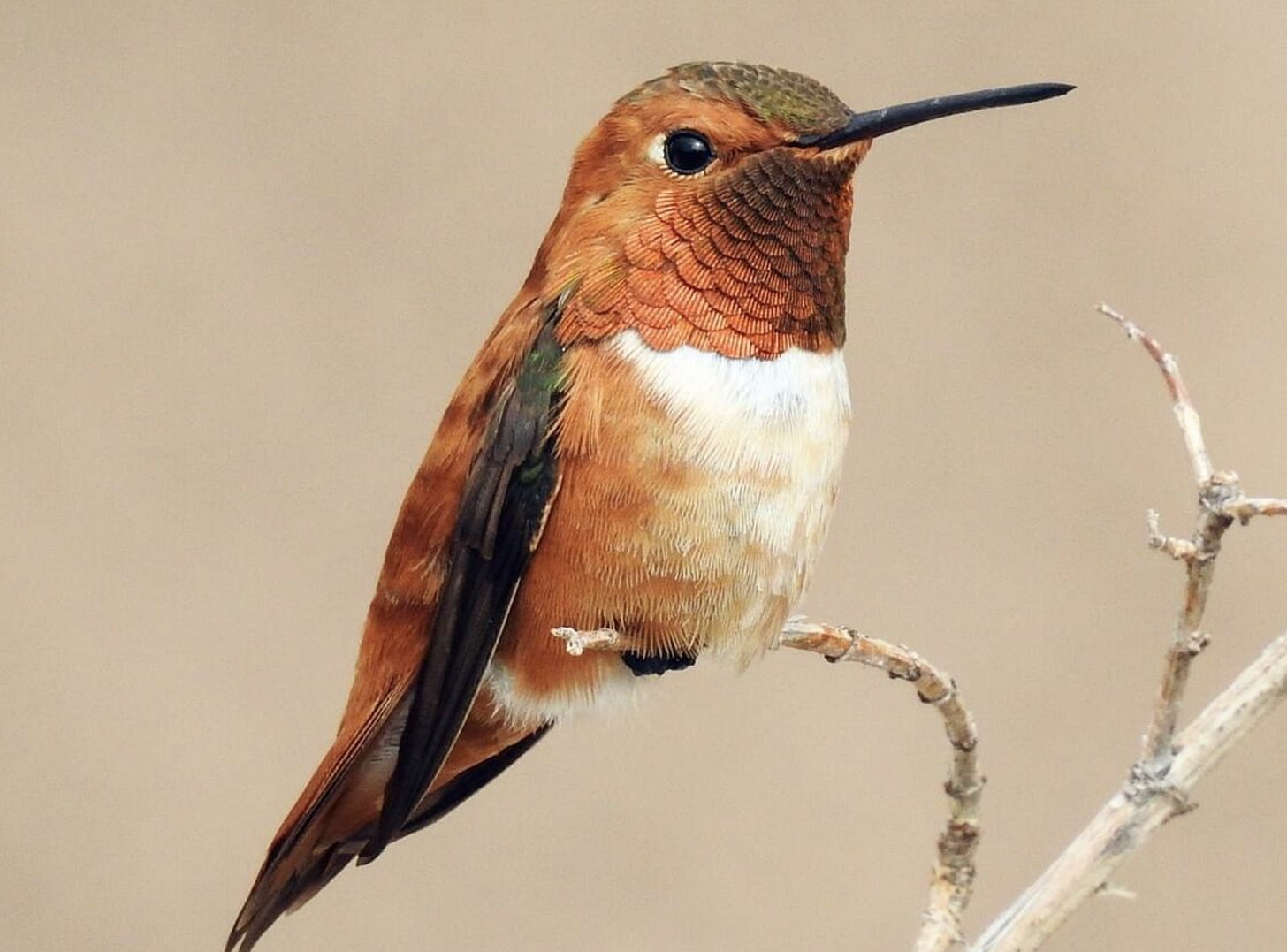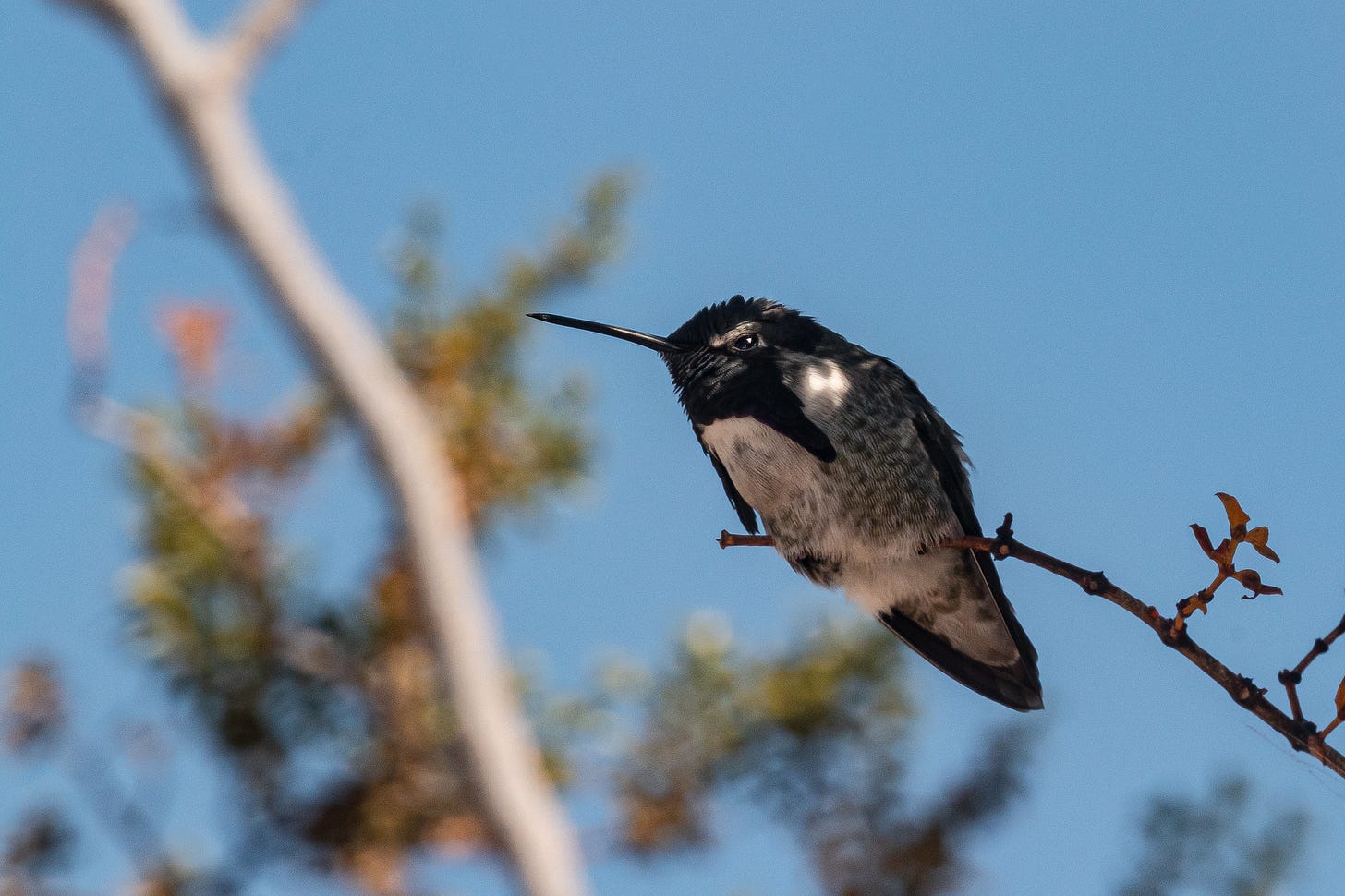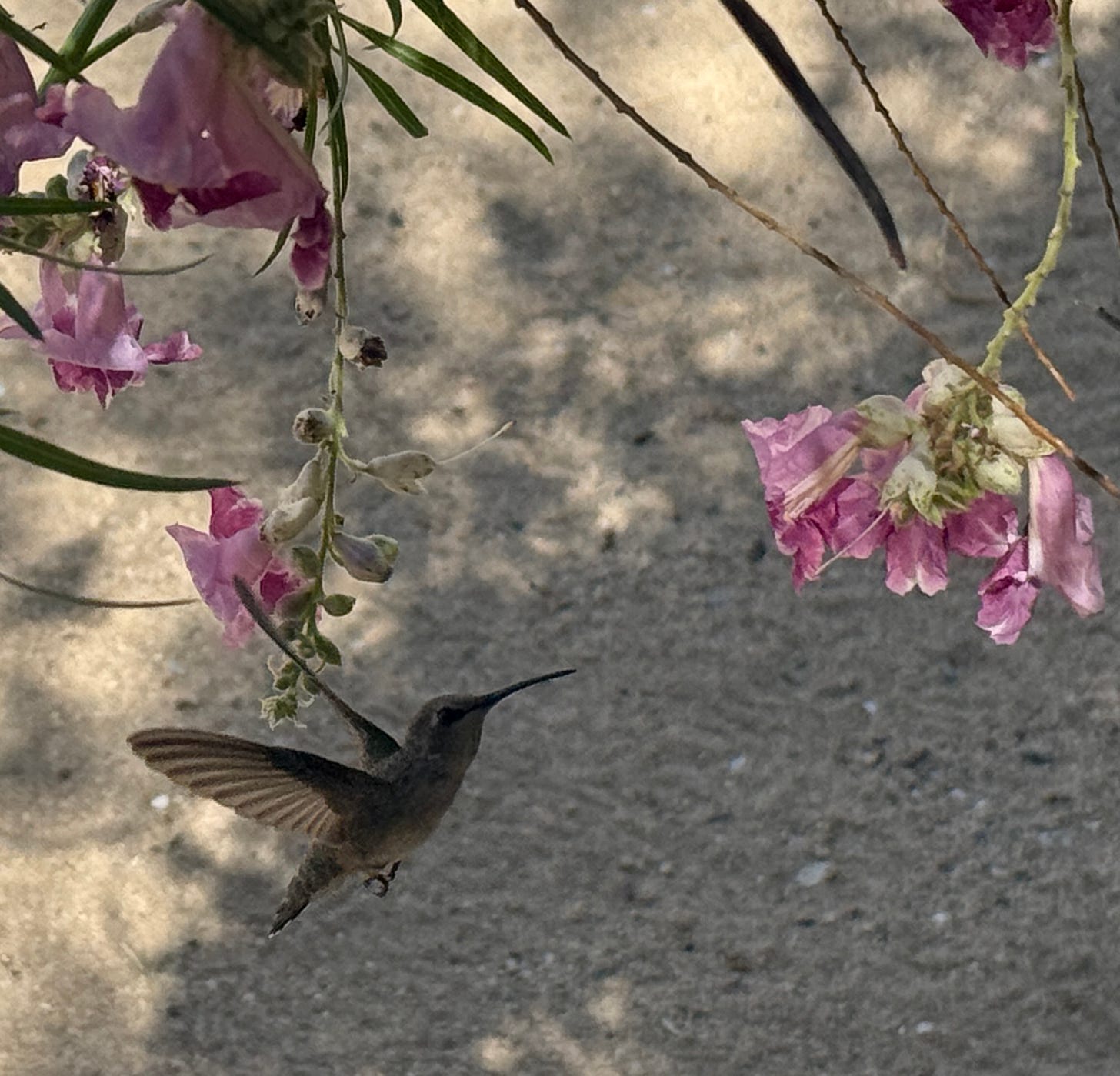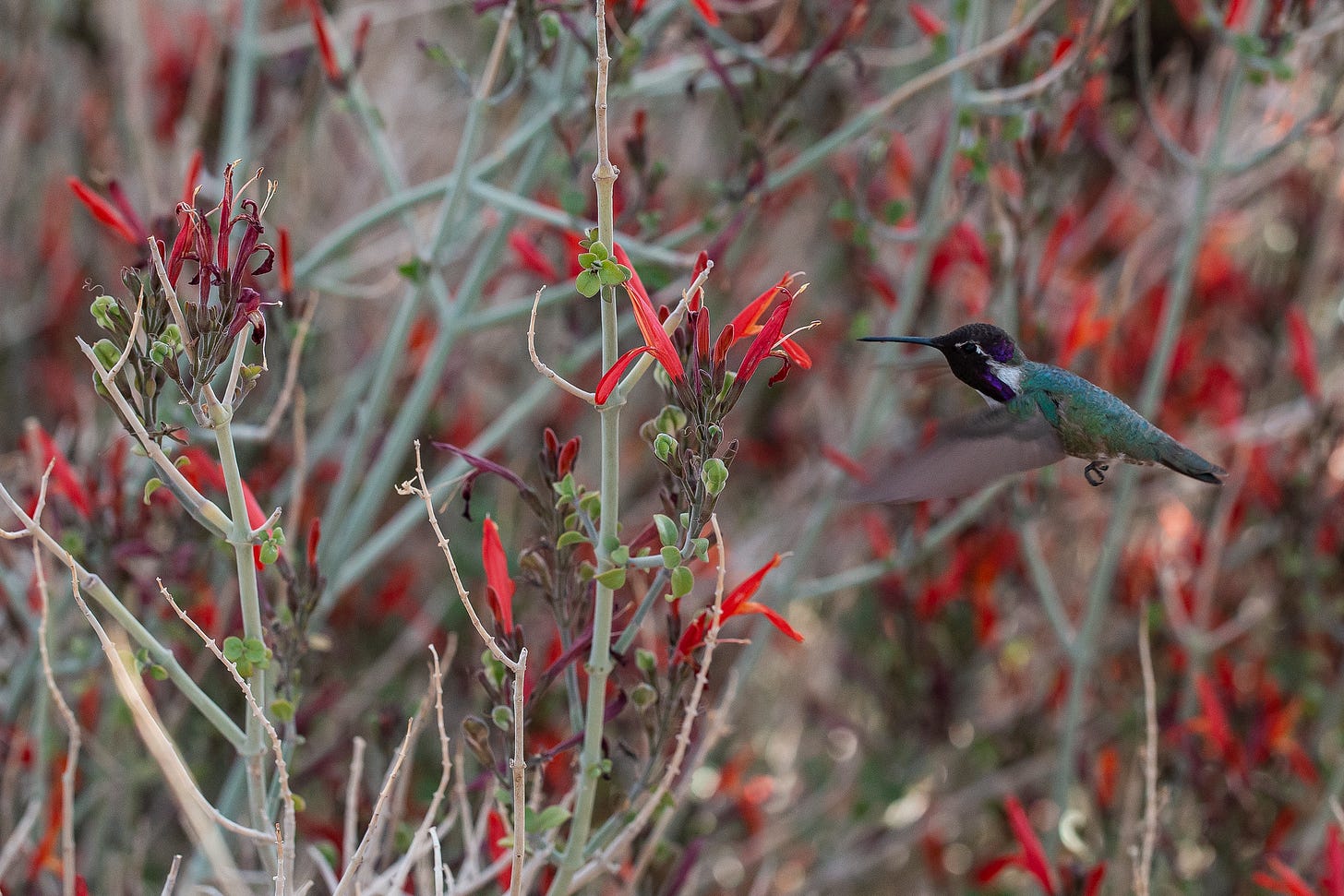Wildlife Wednesday: Shimmering Autumn Immigrants
Hummingbirds take to the skies in an amazing migration

The grand spectacle of bird migration is taking place, and we are lucky to witness swirling flocks (called kettles) of turkey vultures as they pass through the Morongo Basin. Then there are the tinier travelers. Now that it’s fall, several hummingbird species flash through on their way south, taking advantage of hummingbird feeders and—this year—our delirious autumn superbloom.
Keep an eye out if you have a feeder or a fountain with flowing water and you might see black-chinned, calliope, rufous, and Allen’s hummingbirds joining our resident Anna’s and Costa’s hummingbirds.
Do these migrating hummingbirds travel in tiny flocks, in wee sparkling kettles?1
No. These plucky little fuzzies, who weigh no more than a ping-pong ball, fly solo—even young birds making their first flight. Before they fly south from their winter homes or north to spend the summer, they double their weight, transforming into tiny flying butterballs. Before they leave, the males start to get Zugenruhe, a German word means restless and itchy to travel. (We looked in this handy term when we celebrated white-crowned sparrows, who are due back in about two weeks.) The females follow a month or so later.
Hummingbirds fly low, just above treetops, desert shrubs, and water. This flight path lets them see fueling stations along the way and good places to rest. They are experts at catching tail winds, and I imagine these birds, who travel light, find themselves tumbling in the wind with a high-pitched “wheeeeeee!”

Among desert migrants, the rufous hummingbird is legendary. Barely heavier than a penny, it travels up to 4,000 miles from central Mexico to Alaska, farther than any bird its size. Its path cuts directly through the Mojave desert each spring and fall. Each stop in our desert is brief, but essential.
Surviving Our Summers
How do our local hummingbirds survive summer in the desert? Even at its most brutal, there’s always something blooming, and hummers also eat aphids, gnats, and spiders. They become torpid and slow their racing hearts as they hang out in the shade.2
We can give hummingbirds a hand by planting a pollinator garden. We’ve all seen that hummingbirds love red flowers like ocotillo blooms, penstemon, and chuparosa, named after one of the Spanish words3 for “hummingbird.” The Mojave Desert Land Trust provides some useful tips. (Maybe you’ll have better luck than I do, because I kill virtually every bloom I plant.) A plant nursery in Nevada gives advice on how to keep your feeder clean and safe for hummingbirds.
Backyard Evolution
I’ll tax your patience with one more excellent factoid about hummingbirds before I dive into our locals in the future. In May of this year a study in Science showed that the beaks of Anna’s hummingbirds evolved to fit backyard feeders, which became common in the 1950s. In just ten generations, their beaks have grown larger and longer. Their range has also expanded to follow human gardens. Once confined to southern California, Anna’s hummingbirds now thrive from Vancouver to Baja.
¡Viva las chuparosas!

Birders call a group of hummingbirds a “bouquet,” a “glittering,” a “hover,” a “shimmer,” or a “tune” of hummingbirds. Anyone who has watched hummers battling over a nectar feeder knows how fierce they are. Maybe it should be a “murder” of hummingbirds?
Around our house, we call that summer torpor a nap and embrace a rigorous siesta schedule.
Others are chuparrosa (with two r’s) colibrí.
Leave your thoughts in the comments below. Please note that we do not allow anonymous comments. Please be sure your first and last name is on your profile prior to commenting. Anonymous comments will be deleted.
Feel free to share this article!
Help us reach our 2025 goal of $10,000 in subscriptions! Upgrade to a paid subscription for just $5 per month or $50 per year.
Would you care to donate more than $100? Our Paypal account is up and running!



Delightful article for a bird lover especially, thank you. There were many tidbits of information that were new to me and caused my morning resting face to move to a big smile.
Time to dust off the feeders.